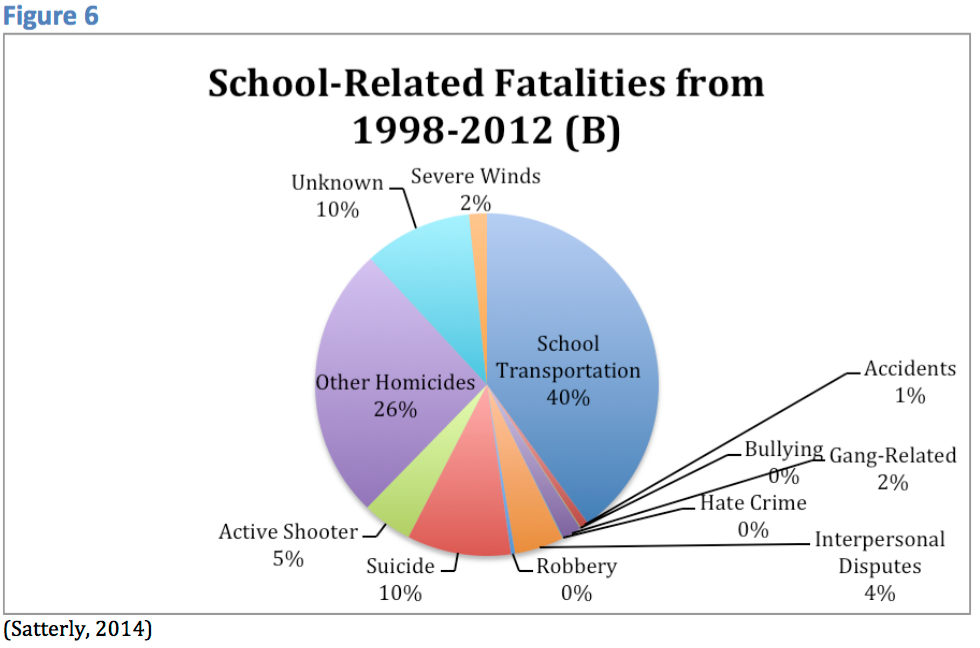School Tragedy
On Tuesday, January 26, Susan Jordan was struck and killed by a school bus. The Principal of Amy Beverland Elementary School in Lawrence, IN, was supervising her students as they boarded buses at the end of the school day. The school bus reportedly jumped a curb, and Mrs. Jordan was pushing students out of the way when she was struck and killed. Two students were taken to the hospital with serious, but not life-threatening injuries.
This information is still developing, so the the purpose here is NOT to be critical of anyone. After a traumatic incident such as this, it is very easy to act on our emotions. Terror Management Theory tells us that feelings of vulnerability are normal, as are our desires to change things so that we can avoid a similar trauma. Making this change should be done in a thoughtful, systematic manner. As always in emergency management, the first step is identifying risk.
In the report, Relative Risks of Death in K-12 Schools, the number one cause of school-related fatalities was found to be school transportation-related incidents. Buses weigh around 33,000 pounds each, and drop off and pick up times has a large number of students and staff near these behemoths. A slight lapse of supervision or care can have tragic consequences.

This chart compares various causes of fatalities. Note that school transportation-related fatalities make 40% of the total.
Schools have developed procedures for getting kids off of, and onto their buses. These procedures were made for a reason, hopefully to meet a goal of student and staff safety. Therefore we do not want to change procedures related to school transportation based on the emotions of the moment. Experience tells us that such decisions often have unintended consequences. We need to make our decision-making deliberate and contemplative. That leaves you with the un-answered question, “What can I do?” One thing you can do is look for ‘mission creep’.
Mission Creep
‘Mission creep’ is, “The gradual broadening of the original objectives of a mission or organization.” Each school has in place various procedures, each with their own goals. As time goes on, things happen which may alter those goals, or cause goals to be forgotten altogether. This is ‘mission creep’ in action. For example, a dismissal procedure may call for parents to park in a certain area to get their children, to keep them away from the buses. Over time, a parent may request to get closer for some particular reason, then another, then another, and before you know it, cars are interfering with bus traffic.
So what can you do to combat mission creep?
1) Assess what you are currently doing.
2) Gather information. Without having all the information, it is hard to change what your doing, and know that you are doing the right thing.
3) Re-identify your goals, then assess whether you are meeting them or not. Has mission creep occurred? Take care of what you should be doing, then you can address whether you should be adding a level of complexity to the current procedure.
4) Identify whether what happened was a system failure, or a failure of application.
a) A systems failure, where what you are doing is not meeting your stated goals, can be fixed by amending, or replacing
the procedure.
b) Application failure requires training and practice to correct, but does not necessarily require a change in procedure.
Has mission creep occurred in your procedures? If what you are doing is not meeting your original goals, plan on how to change them. Do so in a deliberate, thoughtful way. Reassure yourself, your staff, your parents and your students that you are doing the right thing. That can help allay their fears.
Be wary of ‘knee-jerk’ responses leading to changes that have not been properly vetted. There is much at stake.